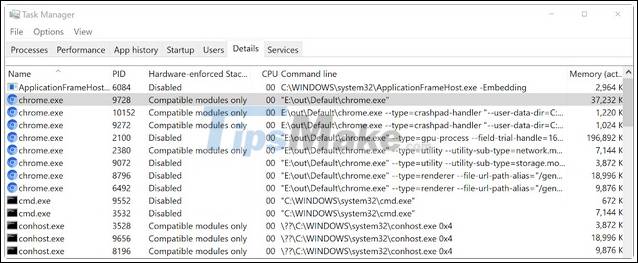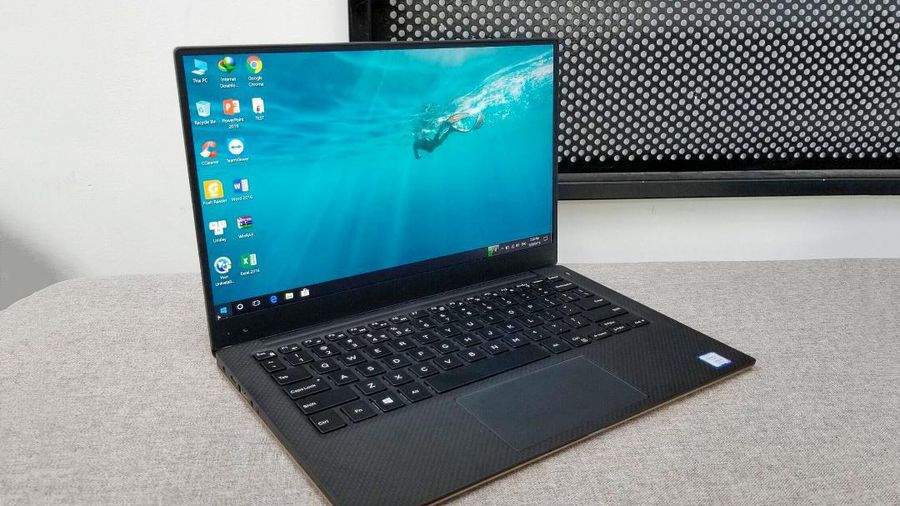Google Chrome uses Windows 10's new security feature to combat exploits
Windows 10 supports Intel's Control-Flow Enforcement (CET) technology called Hardware-enforced Stack Protection.
Hardware-enforced Stack Protection uses the Intel CET chipset security extension to protect applications from popular vulnerability exploitation techniques such as Return-Oriented Programming (Return-Oriented Programming -). ROP) and Object-Oriented Programming (OOP).
An attacker bounty uses such computer security exploiting techniques to hijack the program's intended flow of control in order to execute malicious code through the browser. Windows 10's Hardware-enforced Stack Protection block these attacks when it detects that the natural flow of a modified application is detected.
Google Chrome is not the first Chromium-based web browser to support the Hardware-enforced Stack Protection feature. In February, Johnathan Norman, Microsoft Edge vulnerability research lead Microsoft Edge 90 added support for Intel CET functionality.

This security feature will most likely be applied to Chromium browsers other than Google Chrome and Microsoft Edge, including Brave and Opera. Furthermore, Mozilla is also considering supporting Intel CET for its Firefox web browser. However, no new information has been released since the company announced this a year ago.
Windows 10 users with a CET-compatible CPU (Intel 11th generation or AMD Zen 3 Ryzen) can check if the browser process is using this security feature using Task Manager.

To do that, open Task Manager, click on the Details tab and right-click on the column header, then check the Hardware-enforced Stack Protection option. Once enabled, a newly added column will show Intel CET-enabled processes.
You should read it
- How to Become a Full Stack Programmer
- Stack Overflow hits the hacker face, no significant damage is recorded
- Chrome 73 launches with hardware media key, PWAs and Dark Mode support on Mac
- How to protect your Google account with Password Alert utility
- Google Chrome is now 23% faster, have you tried it?
- To enable Hardware Acceleration in Chrome, Firefox
- How to Implement a Stack Data Structure in C++
- Google Chrome temporarily prevents sideload of extensions
May be interested
- Instructions for enabling Smooth Scrolling on Google Chrome
 smooth scrolling is one of the hidden features on google chrome. when you use other browsers such as firefox or opera, the scrolling effect is smooth and not annoying. google chrome also equipped with this feature, but this feature has been hidden.
smooth scrolling is one of the hidden features on google chrome. when you use other browsers such as firefox or opera, the scrolling effect is smooth and not annoying. google chrome also equipped with this feature, but this feature has been hidden. - 5 Reasons to Enable Enhanced Protection in Chrome
 google chrome's enhanced protection provides powerful security that goes beyond standard filters by proactively detecting threats instead of relying solely on a list of known malware.
google chrome's enhanced protection provides powerful security that goes beyond standard filters by proactively detecting threats instead of relying solely on a list of known malware. - Google releases an urgent security patch for Chrome, users take note!
 google has just continued to roll out another urgent security update for its browser to fix some known issues.
google has just continued to roll out another urgent security update for its browser to fix some known issues. - How to enable redirection blocking to malicious websites on Google Chrome
 enabling this function, it takes on the task of preventing websites from opening a link in a new tab while displaying ads or other unwanted content on the current tab.
enabling this function, it takes on the task of preventing websites from opening a link in a new tab while displaying ads or other unwanted content on the current tab. - How to fix Google Chrome Translate not working
 google chrome's translation feature makes it easy to navigate websites in foreign languages. however, sometimes it can stop working due to outdated settings, cache issues, or extension conflicts.
google chrome's translation feature makes it easy to navigate websites in foreign languages. however, sometimes it can stop working due to outdated settings, cache issues, or extension conflicts. - Now it is possible to hack Windows with Google Chrome
 these days, information about security vulnerabilities appears everywhere with dizzying frequency. now, a new vulnerability related to chrome browser appears, allowing hackers to steal login information on chrome.
these days, information about security vulnerabilities appears everywhere with dizzying frequency. now, a new vulnerability related to chrome browser appears, allowing hackers to steal login information on chrome. - Google claims the new occlusion feature makes Chrome on Windows 25.8% faster
 this information has just been released by google after more than a month of data collection. with faster startup and added occlusion, google has a better chance of retaining chome users.
this information has just been released by google after more than a month of data collection. with faster startup and added occlusion, google has a better chance of retaining chome users. - There was a feature to reduce RAM on Chrome browser from Google, invite experience
 recently google has launched a new feature to overcome google chrome's ram consumption that many users have been waiting for. the new feature is called skip best effort tasks and now users can experience it on google chrome canary version.
recently google has launched a new feature to overcome google chrome's ram consumption that many users have been waiting for. the new feature is called skip best effort tasks and now users can experience it on google chrome canary version. - Instructions to enable safe file downloads on Google Chrome
 in google chrome browser, you can use download restrictions feature to limit downloads, increasing browser security.
in google chrome browser, you can use download restrictions feature to limit downloads, increasing browser security. - Google Chrome has a function to warn users about MitM attacks
 the new version of google chrome 63 contains a new security feature that will detect third-party software that performs mitm (man-in-the-middle) attacks - one of the network attack techniques that allows hackers to connect to the internet by user and collect personal information.
the new version of google chrome 63 contains a new security feature that will detect third-party software that performs mitm (man-in-the-middle) attacks - one of the network attack techniques that allows hackers to connect to the internet by user and collect personal information.










 Windows users need to update this software immediately
Windows users need to update this software immediately Warning: This seemingly harmless message contains malware that threatens millions of Android users
Warning: This seemingly harmless message contains malware that threatens millions of Android users 5 common password-setting errors should be avoided
5 common password-setting errors should be avoided Warning of zero-day vulnerabilities in window manager on PC
Warning of zero-day vulnerabilities in window manager on PC What is Adaptive Security?
What is Adaptive Security? How to use Google Authenticator on a Windows PC
How to use Google Authenticator on a Windows PC